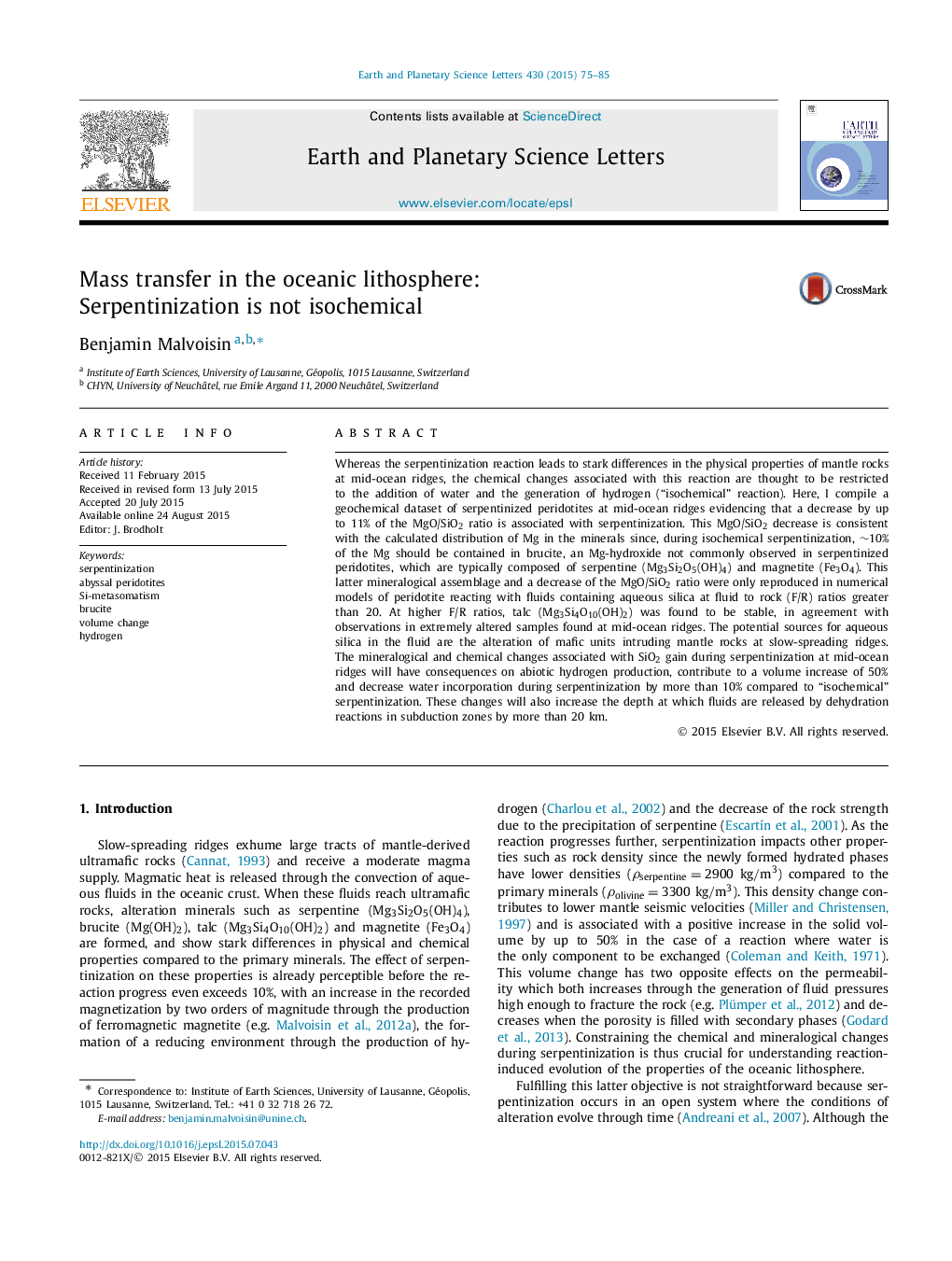| Article ID | Journal | Published Year | Pages | File Type |
|---|---|---|---|---|
| 6427910 | Earth and Planetary Science Letters | 2015 | 11 Pages |
â¢Evidence for a decrease of the MgO/SiO2 ratio during serpentinization at mid-ocean ridges.â¢This MgO/SiO2 ratio is associated with brucite scarcity in serpentinized peridotites.â¢Ultramafic rocks gain SiO2 during interaction with Si-rich fluids at mid-ocean ridges.â¢Consequences for H2 production, volume change and water content in peridotites.
Whereas the serpentinization reaction leads to stark differences in the physical properties of mantle rocks at mid-ocean ridges, the chemical changes associated with this reaction are thought to be restricted to the addition of water and the generation of hydrogen (“isochemical” reaction). Here, I compile a geochemical dataset of serpentinized peridotites at mid-ocean ridges evidencing that a decrease by up to 11% of the MgO/SiO2 ratio is associated with serpentinization. This MgO/SiO2 decrease is consistent with the calculated distribution of Mg in the minerals since, during isochemical serpentinization, â¼10% of the Mg should be contained in brucite, an Mg-hydroxide not commonly observed in serpentinized peridotites, which are typically composed of serpentine (Mg3Si2O5(OH)4) and magnetite (Fe3O4). This latter mineralogical assemblage and a decrease of the MgO/SiO2 ratio were only reproduced in numerical models of peridotite reacting with fluids containing aqueous silica at fluid to rock (F/R) ratios greater than 20. At higher F/R ratios, talc (Mg3Si4O10(OH)2) was found to be stable, in agreement with observations in extremely altered samples found at mid-ocean ridges. The potential sources for aqueous silica in the fluid are the alteration of mafic units intruding mantle rocks at slow-spreading ridges. The mineralogical and chemical changes associated with SiO2 gain during serpentinization at mid-ocean ridges will have consequences on abiotic hydrogen production, contribute to a volume increase of 50% and decrease water incorporation during serpentinization by more than 10% compared to “isochemical” serpentinization. These changes will also increase the depth at which fluids are released by dehydration reactions in subduction zones by more than 20 km.
